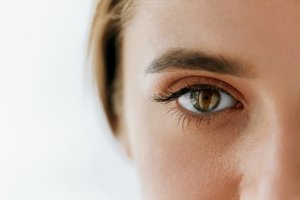- Home
- Editorial
- News
- Practice Guidelines
- Anesthesiology Guidelines
- Cancer Guidelines
- Cardiac Sciences Guidelines
- Critical Care Guidelines
- Dentistry Guidelines
- Dermatology Guidelines
- Diabetes and Endo Guidelines
- Diagnostics Guidelines
- ENT Guidelines
- Featured Practice Guidelines
- Gastroenterology Guidelines
- Geriatrics Guidelines
- Medicine Guidelines
- Nephrology Guidelines
- Neurosciences Guidelines
- Obs and Gynae Guidelines
- Ophthalmology Guidelines
- Orthopaedics Guidelines
- Paediatrics Guidelines
- Psychiatry Guidelines
- Pulmonology Guidelines
- Radiology Guidelines
- Surgery Guidelines
- Urology Guidelines
Dry Eye Sufferers Will Soon Have a Drug-Free Solution

A study of dry eye sufferers who inserted a handheld neurostimulator device in their nose to make their eyes produce more tears experienced significant relief from their disease, according to research presented today at AAO 2017, the 121st Annual Meeting of the American Academy of Ophthalmology.
The device gives patients a new, drug-free alternative to lubricating eye drops and topical ointments. As important, this new route to dry eye relief produces a complete tear, containing all the elements in natural tears. When inserted into the nose, the neurostimulator produces the same reaction as when you cut into an onion. Except with onions, a chemical compound is what stimulates the eyes’ glands so they release tears.
More than 20 million Americans suffer from dry eyes. In fact, one out of every four patients report symptoms of dry eye, making it one of the most common conditions seen by eye care practitioners.
Researchers at the Cincinnati Eye Institute wanted to test the safety and effectiveness of the device, so they asked 97 patients with moderate to the severe dry eye to use TrueTear for 180 days. A test that determines whether the eye is producing enough tears to keep it moist was performed in patients’ eyes before and after nasal stimulation. Tests showed patients’ tear level was significantly higher after nasal stimulation. Patients reported that it was easy to use and they suffered no side effects.
Tears are vital to vision. Healthy eyes are lubricated with tears that are a mixture of oils, water, proteins, and mucus. The protective film this fluid creates supports the clear vision. Without it, eyes dry out and become vulnerable to painful abrasions of the cornea. Corneal abrasions can distort vision.
For years, patients suffering from dry eye have had few options. Most of them simply purchased artificial tears and hoped they got better. However, scientists are developing new therapies that do more than just relieving symptoms.
Michael Ackermann, a biomedical engineer from Stanford Biodesign, a training program in medical-technology innovation and development, came up with the idea for the neurostimulator after he was asked to look for medical needs in eye clinics and to come up with a solution. Ackerman quickly realized that dry eye represents a huge medical need, with no optimal treatments. Eventually, he designed TrueTear.
“I believe this will be a very beneficial treatment option for our dry eye patients,” said lead researcher, Edward J. Holland, M.D., director of Cornea Services at Cincinnati Eye Institute and professor of clinical ophthalmology at the University of Cincinnati. “It’s an innovative technology that effectively and safely increases tear production.”

Disclaimer: This site is primarily intended for healthcare professionals. Any content/information on this website does not replace the advice of medical and/or health professionals and should not be construed as medical/diagnostic advice/endorsement or prescription. Use of this site is subject to our terms of use, privacy policy, advertisement policy. © 2020 Minerva Medical Treatment Pvt Ltd